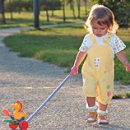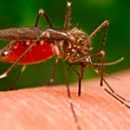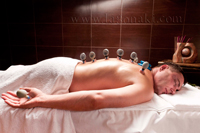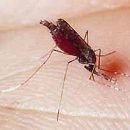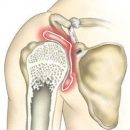Manual therapy is now experiencing lifting and popularity. However, not all reviews about it are positive. Whether the manual therapist treats?
Content
Sometimes, with an awkward turn, the nerve root is infringed. Here can help a manual therapist - a specialist who knows the device of the muscular and a ligament. It helps to restore blood flow in the vessels, relaxing the muscles, and freeze the roasted root. Each manual therapist has its own techniques. Relief may occur quickly, in a few hours, but more often - after a day or 2-3 sessions.
What is manual therapy
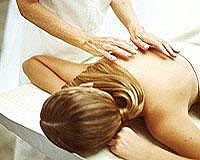 Manual therapy is a relatively new section of medicine, although it is rooted in deep antiquity. Mention of it are found in the ancient peoples of Europe, East and Asia. Another hippocrates in the fifth century BC argued that with the help of manual therapy, many diseases can be treated.
Manual therapy is a relatively new section of medicine, although it is rooted in deep antiquity. Mention of it are found in the ancient peoples of Europe, East and Asia. Another hippocrates in the fifth century BC argued that with the help of manual therapy, many diseases can be treated.
Manual therapy is engaged in the peculiarities of movements in space and each other in relation to a friend of the human body parts (vertebrae, fascia, organs, etc.) and the functional significance of these movements for the body, as well as it is interested in the qualitative state of tissues of these parts and examines the causes and consequences of their deviation from the norm. There is also a whole arsenal of techniques, with the help of which a manual therapist treats violations.
Manual therapy due to professional hands and, of course, the experience and mind of the doctor may have a lot! For example, the spine is the basis of the foundations of our being and in the literal, and in the figurative sense. It is he who gives a lot of hassle to a huge number of people - a person is forced to pay with the nature of the pains and diseases of the spine for their serve.
Method
Manual therapy and diagnostics - a system of manual techniques aimed at correcting or eliminating pathological manifestations caused by changes in the spine, joints, muscle and ligament.
With the substantiation of manual therapy, the dominant value is attached to the restoration of the normal position of the vertebrae and intervertebral disks. The fact is that the vertebral displaced from its physiologically conditioned place can cause the intervertebral disk, spinal roots, nerves, which in turn cause the tension of muscles and ligaments, block their mobility, lead to venous stagnation in a specific area.
The manual therapist carries out strictly dosed local impact on certain spinal segments, in order to restore normal mobility in it. It is necessary that such procedures carry out a doctor who has passed special training.
So that the muscles and ligaments can fix the position achieved after therapy, it is necessary to take a break in treatment by 40-48 hours. Therefore, therapeutic procedures are usually carried out with an interval from 1 to 3 days, the session lasts 20-30 minutes.
Methods of manual therapy
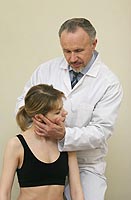 What specific mechanisms underlie manual therapy and why they affect the human body, it is unclear today. Manual therapists practice various methods of impact, applying massage, and ultrasound, and warming up, and therapeutic physical education, but the main techniques of manual therapy are mobilization and manipulation.
What specific mechanisms underlie manual therapy and why they affect the human body, it is unclear today. Manual therapists practice various methods of impact, applying massage, and ultrasound, and warming up, and therapeutic physical education, but the main techniques of manual therapy are mobilization and manipulation.
When mobilization, the doctor flexs the joint to the limit of its amplitude, and when manipulation continues, it continues to move a little over natural limit, overcoming the resistance of the scene, muscles and ligaments. A single act of manipulation is called correction and is to effect on any one part of the patient's body.
According to many manual therapists, the basis of their approach to treatment is the concept of incomplete dislocation or improper relationship of the parts of the skeleton. According to this theory, pain, muscular spasms and numbness can be caused by partial offset of these surfaces, and as a result, the patient will be forced to limit its activity. Using manipulation, manual therapists believes, you can restore the correct interjection of the parts (it is easier to put them in place) and thereby reduce pain.
To clearer to understand the essence of this view, imagine that you started to rotate your own finger around its longitudinal axis. At some point, the torque will begin bending the joints beyond the limits of their natural amplitude, pain will arise, and the stronger you will turn your finger, the stronger there will be pain.
Turning to manual therapists, do not neglect the services of traditional medicine. The attending physician will be able to trace the changes in your health, and prevent you of possible unqualified actions.
Osteochondrosis begins
 When osteochondrosis is just beginning, one of his symptoms is an increased muscular tone. Pain is not yet fixed by consciousness, but she already throws back, shoulders, legs, makes it makes it easier to take a pose, in which the patient is easier, but subsequently, such forced behavior leads to the fastening of the wrong posture, which creates an additional burden on the spine, and then vertebrae due to irregular muscle tension.
When osteochondrosis is just beginning, one of his symptoms is an increased muscular tone. Pain is not yet fixed by consciousness, but she already throws back, shoulders, legs, makes it makes it easier to take a pose, in which the patient is easier, but subsequently, such forced behavior leads to the fastening of the wrong posture, which creates an additional burden on the spine, and then vertebrae due to irregular muscle tension.
Moreover, muscle spasm depletes the muscle itself, because the normal mode of its operation is reduced, then relaxation. At the same time, through the muscles under the influence of the reduction of the muscular fiber under certain pressure, blood pumps blood. Muscles get enough nutrition than strengthened. In this sense of any workout, «pumping» Muscular mass.
The spasmned muscle does not receive enough oxygen and nutrition, weakens and can partially reborn into a coarse, similar logging, connecting fabric.
After refueling the displaced vertebra, when the cause of pain (nerve compression) is eliminated, it is necessary to remove muscle spasm with a massage, mechanically «ride» Blood according to the compressed vessels so that the muscular tissue has received enough nutrients.
It happens that at the beginning of the patient's treatment, instead of muscles, they feel like noded ropes. These nodes are the so-called fibrosits, or foci of cutting rebirth, the degeneration of muscle tissues, in the process of treatment are gradually absorbed and replaced by a full-blooded, elastic muscle.
Complications of manual therapy
With a rough, unchanged implementation of individual methods of manual therapy at any level, especially at the level of the neck and lower back, the following complications are possible:
- Temporary circulatory disorders in the brain;
- ischemic stroke;
- paralysis and parish limbs (absence and limitation of mobility);
- vertebral fractures;
- gap of muscle-ligament structures.
General requirements for the appointment of manual therapy
- Establishing the disease, exclusion of contraindications for manual therapy;
- Determination of the mechanism of disorders of the spinal function (block, hypermobility, regional postural imbalance muscles and t.D.);
- Determining the tactics of the application of methods of manual therapy;
- Establishing a positive psychological contact (compatibility) with patients.
Contraindications for manual therapy
Absolute:
- Spinal tumors, malignant neoplasms of any localization;
- Sharp and in the aggravation phase chronic infectious diseases, including osteomyelitis of the spine, tuberculosis spoon);
- Recent traumatic spine lesions, condition after surgery on the spine;
- Pronounced instability of the vertebral motor segment (III-IV stage) with spondylolisthesis phenomena, spondylolysis;
- Acute and subacute inflammatory diseases of the spinal cord and its shells (myelit, meningitis and t. NS.);
- Acute disorders of the spinal circulation (spinal strokes);
- Thrombosis and blockage of the vertebral artery;
- The injury of the spinal cord and the operation on it.
Relative:
- the presence of signs of impaired psyche;
- progressive increases of symptoms of falling out the function of the spinal roots violation of the sensitivity of pain, tactile, disruption of movements, movement regulation;
- Diseases of internal organs in the decompensation stage (corresponds to the stage of pronounced manifestations of any disease), heart failure, respiratory failure, renal failure, etc.

